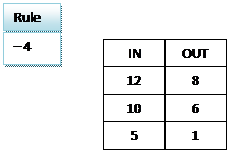Developing Basic Fact Power
The Everyday Mathematics curriculum employs a variety of techniques to help children develop their "fact power", or basic number-fact reflexes. There are many contexts where children practice facts. Change some of the numbers in the routines below for more fact practice.
Practice Through Games
The curriculum has a wide variety of fact practice games. Because children find these games much more engaging than standard drill exercises, they are willing and eager to spend more time practicing their basic facts. For more information on games please visit our sample games page.
The Everyday Mathematics Family Games Kit comes with gameboards, game pieces, and a Family Games Kit Guide, which provides instructions for all games in the kit. For more information about ordering a Family Games Kit, visit the publisher's website.
McGraw-Hill Education, the publisher of Everyday Mathematics, offers online games for subscribers. Access can be purchased for entire schools or individual classrooms. You will need a password from the teacher. Please visit Everyday Mathematics Online to log on.
50-Facts Multiplication Tests
Beginning in fourth grade, students take timed tests on multiplication facts. These are recommended at least once every three weeks. Students calculate their percentage correct and track their progress with line graphs.
Choral Drills and Mental Math Exercises
Beginning in first grade, short oral drills are suggested for fact review. These drills can become a routine during transitional times of the day. In fourth through sixth grades, basic fact power is reinforced in routine mental math exercises called Mental Math and Reflexes.
Fact Extension Practice
Fact extensions are calculations made with larger numbers using knowledge of basic facts. If children know that 3 + 4 = 7, then they also know that 30 + 40 = 70, and 300 + 400 = 700. Children are introduced to fact extensions in first grade and are encouraged to practice them throughout the program.
Fact Triangles
Fact Triangles are Everyday Mathematics' flash cards with a difference. The difference is fact triangles help children learn fact families rather than isolated facts. Partner practice with addition and subtraction fact triangles begins in first grade. Multiplication and division fact triangles are introduced in second grade. Practice with Fact Triangles is often suggested in the Home Link and Study Link (homework) assignments.

Frames and Arrows Diagrams
These diagrams are visual representations of rule-based sequences of numbers. Variations of these diagrams are used routinely from first through third grades. The challenge of solving these number puzzles by filling in the blank frames involves lots of practice with basic facts.

What's My Rule? Function Machines
Variations of these function machines are used routinely from kindergarten through sixth grade, and provide another avenue for basic fact practice.




